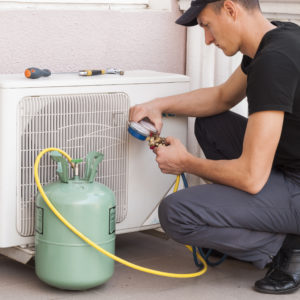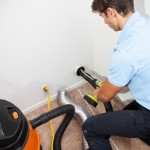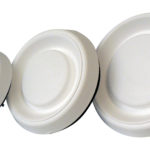 An understanding of regulations is critical to success in the HVAC industry. It ranks up there with getting the ventilation right and ensuring your customers’ quiet enjoyment of their homes with high-quality diffusers. Two upcoming policies that will have a big impact on HVAC are the new refrigerant regulations and the new efficiency requirements that will be in effect January 1, 2018.
An understanding of regulations is critical to success in the HVAC industry. It ranks up there with getting the ventilation right and ensuring your customers’ quiet enjoyment of their homes with high-quality diffusers. Two upcoming policies that will have a big impact on HVAC are the new refrigerant regulations and the new efficiency requirements that will be in effect January 1, 2018.
New refrigerant regulations
Because of the Kigali Agreement in which signatories agree to transition to refrigerants with low global warming potential (GWP), both the US and Canada will be phasing out the use of hydrofluorocarbons (HFCs). In effect, this has worked out to be an expansion of the treatment of ozone-depleting substances (ODSs).
As of January 2017, only certified reclaimers or technicians can purchase ODSs such as hydrochlorofluorocarbons (HCFCs), chlorofluorocarbons (CFCs) and now HFCs.
As of January 2018, any technician wanting to work with refrigerants classified as (ODFs) or their substitutes will need to pass a certification exam. Once certified, they will need to keep a copy of their certification for up to three years after it expires. Technicians will also need to keep records of all disposals of equipment with five or more pounds of refrigerant, noting:
• Location, date and refrigerant type
• Quantity of refrigerant recovered from each piece of equipment
• Details of refrigerant transfers, including the name of the person receiving the transfer, date, and quantity and type of refrigerant transferred for reclamation or destruction
In 2019, there will be a new leak rate table and quarterly or annual leak inspection will be required for any equipment that exceeds the rates as follows:
• 30% for industrial process refrigeration using over 500lbs of refrigerant (will require a quarterly inspection)
• 20% for commercial refrigerant using 50-500lbs of refrigerant (will require an annual inspection)
• 10% for comfort cooling in office and residential buildings (will require an annual inspection)
New efficiency requirements
The energy conservation standards that are scheduled to come into effect January 2018 are predicted to have more impact on energy consumption than any energy-saving standard in history. The new standards set by the US Department of Energy (DOE) are for commercial air conditioners and heat pumps and commercial furnaces.
January 2018 marks the first stage in a two-stage process covering new standards that cover rooftop air conditioners for low-rise buildings such as hospitals, schools, and large retail outlets. The requirements for 2018 will reduce consumption by 10%, and by 2023 the expected savings in consumption will be 25-30%.
The (DOE) estimates the new standards will save 1.7 trillion kWh over 30 years, and building operators will save $4,200 to $10,100 over the life of the equipment.
Manufactures such as Trane, Rheeme and Daikin have equipment available that meets or exceeds these new ratings.
The performance metric is changing from EER to IEER, which provides a more complete picture of equipment efficiency. EER is the cooling output of equipment divided by the total energy consumption. EER can be measured at any given operating capacity.
IEER is the rating of EER at a weighted calculation of a minimum of four different capacities. Weighting allows for factors such as the likelihood that equipment will rarely run at full capacity. In IEER calculations, full capacity EER makes up only 2% of the overall rating. While IEER is poised to become the preferred metric, it is not a new system. It was previously known as Integrated Part Load Variance (IPLV).
Soon you can expect to see new ratings on commercial HVAC equipment. And HVAC technicians working with cooling systems should be considering certification. One thing is certain, these changes promise to keep the HVAC industry busy well into 2018.



